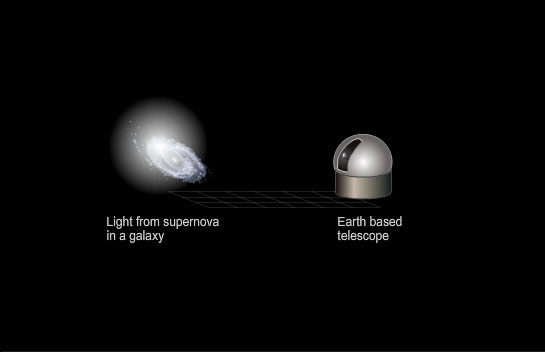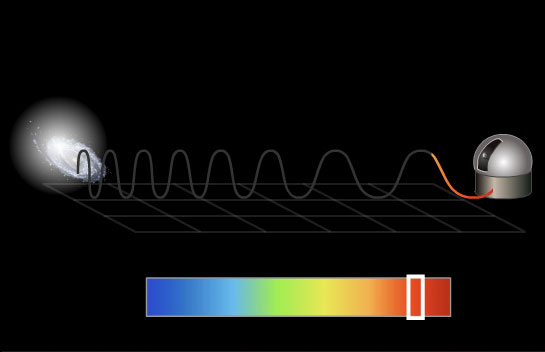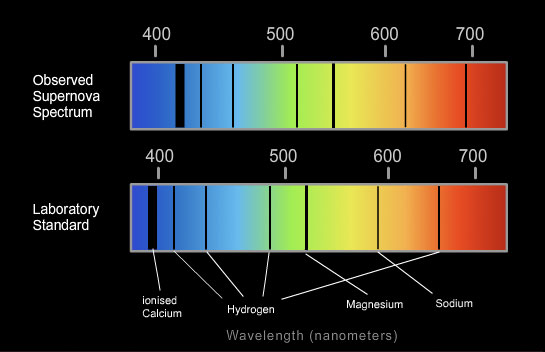Red Shift
Understanding the Doppler Effect makes it easier to understand Red Shift. The Doppler Effect deals with the movement involved in waves such as sound waves and mechanical waves i.e. water. Red Shift deals with the movement involved in light waves.
In Red Shift the observer will see a shift in the observed colour rather than a change in pitch which is observed in the Doppler Effect. Light waves behave in a similar way to sound waves. When a light wave is stretched and the wavelength increased the result is a shift towards the red end of the spectrum. Similarly, when a light wave is compressed and the wavelength shortened the colour shifts towards the blue end of the spectrum phenomenon referred to as Blue Shift.
Red Shift and the expanding universe
Red shift occurs when light waves are stretched. The challenge for astronomers is to determine whether the light they observe has been stretched by the expansion in space. To do this astronomers use a source which produces a constant source of light, a source for which they can measure the observed spectrum against a known spectrum. Supernovae are best suited for this or more specifically a type 1a supernova. Supernovae are explosions caused when massive stars collapse under their own gravity. The light produce from these explosions can outshine a whole galaxy for several weeks or months. Type 1a supernovae always release the same amount of light with the same amount of intensity. By observing the spectrum of a type 1a supernova the astronomers can compare this with the known spectrum at the time of the explosion. This is because the astronomers know the elements involved in the explosion and their associated spectrums. By measuring the difference in the spectrums the astronomers can measure the amount of red shift and thus the amount of expansion of the universe. Alternatively, astronomers can seek out similar sized stars to our sun in the solar system and compare the observed spectrum of the stars to that of our sun.
The animation below shows the red shift of a supernova:
Red Shift
A supernova explosion in a distant galaxy produces enough light to outshine the entire galaxy for a couple of weeks or months. The light from this event can be detected by Earth based telescopes.

The light travelling from the supernova towards Earth is stretched because the universe is expanding and so space also expands. The stretched light’s wavelength is shifted towards the red part of the spectrum and this phenomenon called cosmological red shift.

By comparing the actual absorption spectrum of the supernova to the observed spectrum astronomers can measure the shift in the absorption lines. It can be seen from the spectra above that the absorption lines are shifted towards the red end of the spectrum. By measuring the amount of shift in the light astronomers can derive the speed at which the area of space is expanding.

